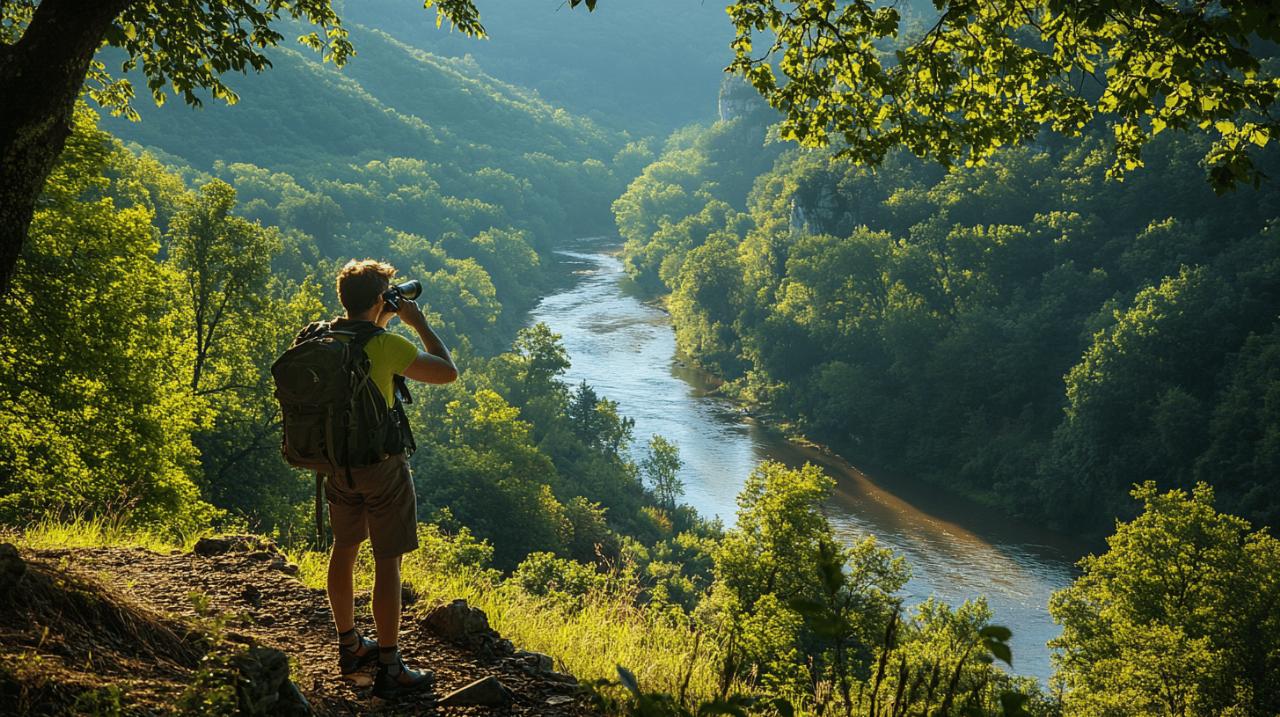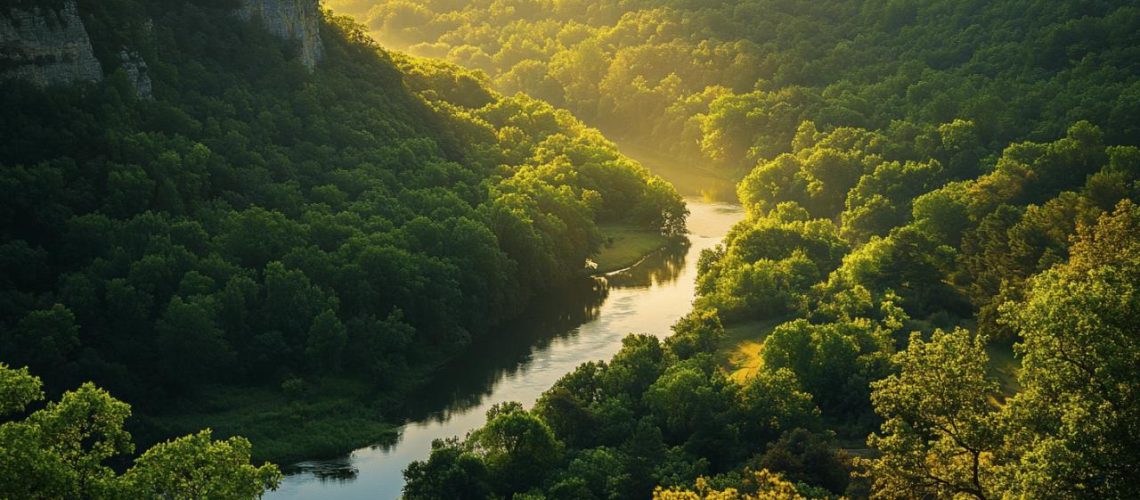Nestled in the heart of southwestern France, the Dordogne region stands as a testament to the harmonious coexistence of natural splendour and cultural heritage. This verdant paradise captivates visitors with its diverse ecosystems, abundant wildlife, and breathtaking landscapes that change with the seasons. For nature enthusiasts seeking to immerse themselves in unspoiled beauty, the Dordogne offers an unparalleled experience that combines ecological richness with historical significance.
The rich ecosystems of dordogne
The Dordogne region boasts an extraordinary variety of natural habitats that support a remarkable biodiversity. From the meandering river valleys to ancient woodlands, each ecosystem contributes to the ecological tapestry that makes this area a haven for wildlife. Nature lovers can explore these diverse environments through numerous hiking trails and guided tours available throughout the region. Many travel websites, including https://www.amicipaesedioz.it/, feature detailed articles about the extraordinary biodiversity found in this French paradise, providing valuable insights for visitors planning their nature-focused holidays.
River valleys and wetland habitats
The lifeblood of the region, the Dordogne River and its tributaries, create rich wetland habitats that support numerous species of flora and fauna. These waterways carve through limestone landscapes, forming dramatic valleys flanked by steep cliffs that provide nesting sites for rare birds. The river systems maintain a delicate ecological balance that sustains everything from microscopic organisms to larger mammals that depend on these waters. The moderate climate of the region allows these aquatic environments to thrive, with summer water temperatures in the lakes reaching a pleasant 26°C, making them perfect for both wildlife and human visitors enjoying activities like canoeing and kayaking.
Within the Causses du Quercy Regional Nature Park, which encompasses part of the Dordogne region, these wetland ecosystems are particularly well-preserved. The park authorities have implemented conservation measures that protect these sensitive habitats while still allowing visitors to appreciate their beauty through responsible tourism practices. The interconnected nature of these river valleys creates ecological corridors that enable species to move freely between different areas, enhancing the overall biodiversity of the region.
Ancient forests and woodland species
The ancient forests of Dordogne represent some of the most well-preserved woodland ecosystems in France. These forests, some dating back hundreds of years, provide shelter for countless species and create a mysterious, enchanting atmosphere for visitors. Oak, chestnut, and walnut trees dominate these woodlands, creating a canopy that supports multiple layers of life beneath. The forest floor is home to a rich variety of mushrooms, including the famous black truffles that the region is renowned for.
Seasonal changes transform these forests dramatically, from the vibrant greens of spring and summer to the golden hues of autumn when the chestnut and walnut trees prepare for harvest. The woodland ecosystems play a crucial role in maintaining soil quality and preventing erosion in the hilly terrain of the Dordogne. For nature enthusiasts, exploring these forests offers opportunities to witness the delicate balance of life that exists within mature woodland habitats, from the smallest insects to the magnificent trees that have stood for generations.
Wildlife spotting opportunities
 The ecological diversity of Dordogne creates ideal conditions for wildlife watching throughout the year. The region serves as home to numerous species, many of which can be observed in their natural habitats with patience and respect for their environment. The varied landscapes, from river valleys to forested hills, support different wildlife communities that have adapted to their specific ecological niches. For wildlife photographers and nature lovers, the changing seasons bring different spotting opportunities as animals adjust their behaviours according to seasonal patterns.
The ecological diversity of Dordogne creates ideal conditions for wildlife watching throughout the year. The region serves as home to numerous species, many of which can be observed in their natural habitats with patience and respect for their environment. The varied landscapes, from river valleys to forested hills, support different wildlife communities that have adapted to their specific ecological niches. For wildlife photographers and nature lovers, the changing seasons bring different spotting opportunities as animals adjust their behaviours according to seasonal patterns.
Rare bird species to observe
Birdwatchers flock to the Dordogne region to glimpse some of the rare and spectacular avian species that inhabit or migrate through the area. The limestone cliffs that border the rivers provide perfect nesting sites for peregrine falcons and eagle owls, while the wetland areas attract herons, kingfishers, and various waterfowl. The forests serve as home to woodpeckers, including the rare middle spotted woodpecker, as well as numerous songbirds that fill the air with their melodies, especially during the spring breeding season.
The Dordogne sits along important bird migration routes, making spring and autumn particularly rewarding times for birdwatching enthusiasts. During these periods, the region welcomes transient species that stop to rest and feed during their long journeys. Local conservation efforts have helped protect critical habitats for these birds, ensuring that future generations of birdwatchers can continue to enjoy the rich avian diversity. Guided birdwatching tours are available throughout the region, led by knowledgeable locals who can help visitors spot and identify the more elusive species.
Mammals and Reptiles of the Region
Beyond its avian residents, the Dordogne supports a diverse population of mammals and reptiles that contribute to the ecological balance of the region. Wild boar and deer roam the forests, while otters and beavers have made a comeback along the waterways thanks to conservation efforts. These mammals play important roles in their ecosystems, from seed dispersal to maintaining the health of aquatic environments. Nocturnal species like badgers and pine martens may be harder to spot but are nonetheless vital components of the food web.
The sunny limestone areas of the Dordogne provide ideal habitats for various reptile species, including the western green lizard and the Aesculapian snake. These cold-blooded creatures can often be spotted basking in the sun during warmer months. The region also hosts several amphibian species that depend on the clean waters of the Dordogne’s rivers and ponds for reproduction. For visitors interested in these less prominent but fascinating creatures, early morning or late evening walks offer the best opportunities for sightings, particularly in less trafficked natural areas away from the popular tourist sites like the famous castles and prehistoric caves that also define this multifaceted region.

